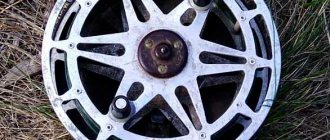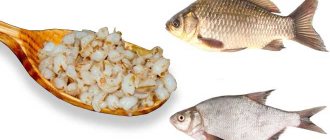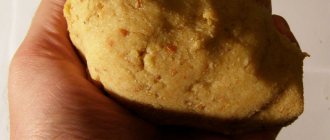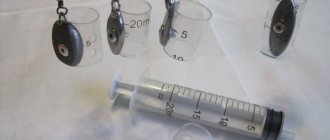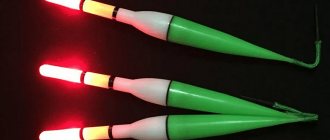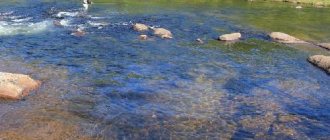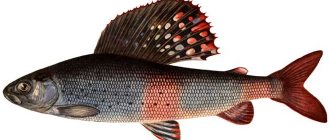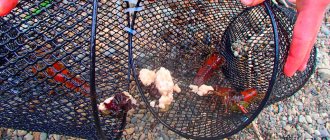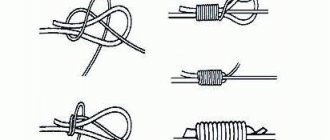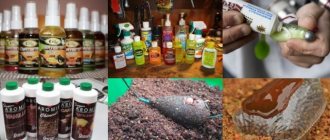Spring has come. Winter gear has already been put away until the next season, and the fisherman’s main task is to find a decent fishing rod, equipment, choose a reservoir and open a new season. To do this, he must have a good understanding of the behavior of fish after wintering, fishing conditions, and the start time of biting.
Let's look at when and at what temperature the following fish begin to bite after winter: carp, pike, bream, carp, roach, catfish, tench, perch.
When does the carp start biting?
The first good speck bite begins 3 – 4 weeks after the ice melts. During this time, the water level in the reservoir stabilizes and the turbidity settles. Carp emerge from wintering pits into shallow water in order to warm up and get enough oxygen. The fish at this time have little interest in searching for food, so you shouldn’t expect a good catch.
The best conditions for carp fishing
- Place . Shallow waters with dense vegetation or holes up to 2–3 meters deep are suitable for carp fishing.
- temperature should warm up to 18 °C.
- Atmosphere pressure . Increasing pressure for several days in a row is the key to a good catch.
- Weather . In early spring, choose sunny, windless, warm days for fishing.
When does carp start biting in ponds?
The ideal time for catching carp on a pond is the end of April , May , when consistently warm weather sets in and the water warms up. After winter, the fish has time to get over the disease and is intensively fattened before the upcoming spawning.
The trick to spring fishing also lies in the fisherman’s caution: before the water has time to bloom, he must behave carefully and not give away in front of the fish. In spring, carp stay at shallow depths, so even shade can scare them away.
Bait
For carp fishing in March and April, the best bait option is bloodworms. At the end of April-May, the diet expands significantly, so the fish actively bite on peas, corn, potatoes, and boilies.
Lure
Carp bait is used to attract fish to the place and get a larger catch .
You can buy it at the store or prepare it yourself. Store-bought mixtures are advantageous in that they are already ready for use, but professional fishermen prefer to use homemade baits that do not use chemicals (boiled and mixed semolina, peas, millet, pearl barley, corn porridge). For greater attractiveness, attractants are used: vanilla, coffee, cocoa, clove syrup.
Pike – when it starts to bite after spawning
The post-spawning pike bite begins in mid-March and can last until mid-May. At this time, the fish actively rushes to most baits:
- wobblers;
- rotating spoons;
- vibrators;
- spinnerbaits;
- silicone and foam baits;
- for live bait (small perch, sprat).
When using bait as bait, it is important to place the bait on the hook correctly because the fish must remain as active as possible to attract the predator. The best option for fishing on the river is to hook it through the gills or on the upper lip. While fishing on the lake, he gets pierced in the back.
Optimal time for fishing with spinning rods and lures
For a big catch, you need to go out on the water in the morning: from 7 to 10 o’clock or in the afternoon - after 16.00. Early in the morning and late in the evening, pike do not hunt as the water temperature drops. If precipitation begins, low clouds and a drop in air temperature, the pike stops biting altogether.
On reservoirs, shallow places with preserved last year’s vegetation are selected.
Spinning fishing from the shore.
To catch pike from the shore, you need a rod no longer than 2.7 m with a weight of up to 20 grams.
River pike differs from lake pike: it is more energetic, so in the first case, active wiring is used. Fishing from the shore involves changing places as quickly as possible. If after 10-15 casts the fish does not respond, you should immediately change the point.

Lure fishing.
The most suitable option for casting a spinner: pendulum or side. So the bait flies a short distance. Vertical whip casting is possible in the absence of tree branches or bushes.
The movement of the spinner should be uniform, slow or at medium speed. On the edges bordering the shallows, step jigs are used.
Bream
Bream quickly reacts to the onset of spring and as soon as the water warms up to 5-10 ° C , it begins to feed.
Moreover, the cleaner the water, the more active the fish. With the onset of warmth, bream leaves their wintering pits and moves closer to the shore to a depth of no more than 5 meters . The reason for this is the increase in water temperature, its enrichment with oxygen and the presence of food brought by the flood. The most successful places for catching bream on a feeder are shallow areas of a reservoir with an uneven bottom. You should look for it along the edges or near old reeds.
On the river, schools of bream can be found on the edges of the riverbed or in shallow water near them. Promising places are under steep banks near pools, without dense vegetation.
When can you start fishing with a feeder?
The main task of a fisherman when catching bream on a feeder is to get to the pre-spawning feast, when the fish gather in schools for active feeding.
In May, during spawning, bream moves to bays and river mouths; you can also find them near dams.
early spring, fishing on the feeder is possible throughout the daylight hours. From May you can go out on the water throughout the day, and at night the bream comes closer to the shore to feed.
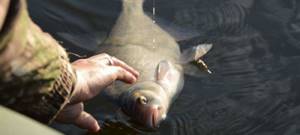
The influence of weather on the bite of river fish
I’ve been fishing on different rivers for many years, both in winter and summer, and I never cease to be amazed at the fish’s antics that are related to the weather. In winter, the drop in pressure with the accumulation of snow increases the activity of white fish, which are good for pulling and jigs. Winter bream stands apart, as it catches well in sunny weather, frost below minus 30 and pressure above 760. However, one condition must be met - schools of bream must sink to the bottom. If the fish hangs at half-water, then the catches are a bit tight.
But in the summer with bream on the rivers it’s the other way around, when the pressure exceeds 760, it’s almost barely alive. And the heat and stable pressure around 752 are just right for summer bream. In the heat of this year, even pike caught amazingly at any pressure! But the closer we get to autumn, the more weather changes begin to affect the success of fishing. The best catch pressure is 744-750. And already 755 is a bit high, even if it is stable, pike in such a period is usually sluggish, but hunting for perch is promising. The worst thing is a sharp change in pressure by more than 5-7 units, then the river pike begins to suffer from the disease of “indifference to bait.” Although just before the weather changes you can still do some good fishing. Let’s say today the pressure is 744, and tomorrow they promise 764. If the weather forecasters are right, then today you can actually get a good pike bite. You can chase bream and pike perch until dawn. But for the next couple of days you can forget about the toothy one, it’s as if it will die out in the pond.
And most importantly, in any weather chaos, I under no circumstances cancel fishing, because it’s a day off! Firstly, you will definitely relax by the water. Secondly, there is always a chance, even in the worst weather, to run into a fish hatch - you never know! Often one very large tail, caught completely by accident, can make or break a fishing trip! Thirdly, fishing in bad weather is also very interesting - when it’s hot, you don’t have to really rack your brains to fill a cage or kukan with fish, but when the bite is weak, the catch is doubly valued, because it is hard-earned and hard-earned.
In “bad” weather, I tune in not for small things (you can’t get a lot of them anyway), but for big fish. One of the favorite options is the side bream bottom. You can work with this gear at any distance from the shore - you never know where the “sick” fish will go. The boat allows you to fish short, which is very important when precision in consistent fishing of the edges is required. For example, I’m fishing in a hole with a heavy feeder, I see a weak poke, I hook it - nothing. I take it out, there is mucus above the feeder, obviously bream, which means it walks in this area, but does not sink to the bottom, and does not respond to bait. There are two ways out here. The first is to raise the bait above the bottom, increasing the length of the leader, and even placing a foam ball on it. The second is to simply change the place, looking for dumps, breaking through smaller places where the bream stays near the bottom. In any case, at least a little, but the fish must eat every day, we eat in any weather.
Roach
In spring, roaches are most indiscriminate in food and are most active due to the feeding that precedes and ends spawning. After the water opens from ice and saturates it with oxygen, the fish moves around the reservoir in search of food. At this time, it “responds” best to natural baits offered by the fisherman:
- maggot;
- bloodworm;
- worms;
- burdock larva.
When the water in the river warms up to 10° C, the fish begins spawning, after which it “gets sick” for about 14 days. At this time, it is almost impossible to catch roach.
Then the roach goes out again to search for food and you can catch it until the fall. The only exception is very hot summer days, when it goes to greater depths.
The beginning of roach fishing after winter on the river and with a fishing rod
For spring fishing for roach with a fishing rod on the river , the quietest bays are selected, in which the depth does not exceed 3 meters.
You need to work areas near reeds and abundantly overgrown with grass. The main diet of roach is localized here, so such areas are often abundant in fish. If a fisherman chooses a place on the current , then you need to use the appropriate equipment: heavy weights and floats to facilitate long-distance casting.
On the river, it is also necessary to use fertilizer, which, in addition to dry biscuits and breadcrumbs (for example), should also include an animal component: bloodworms, maggots. Feeding is done at the rate of 1-2 balls for 30 minutes. It is not worth feeding often and a lot in the spring - this worsens the bite, because the fish quickly becomes saturated.
In order for the fish to react better to the bait, the maggot should be placed on the hook not with a stocking, but across it so that it moves.
Bleak
You can go fishing for bleak at any time of the year.
From early spring it is extremely active, quickly responding to the offered bait. After the water has warmed up to 6°C, the most intense bite begins. Bleak reproduces quickly and lives in large flocks. Places at river mouths where large amounts of food accumulate are suitable for catching bleak. Lures for March bleak:
- maggot;
- miniature pieces of lard;
- bloodworm.
You need to attach the bait so that the tip of the hook comes out - this will not allow the fish to get away.
It is important to choose the right hooks, sinkers and floats (sensitive). There is no need to save money; it is better to choose quality material. In April, bleak enters coastal waters and is most active in the morning from 6 to 10.00 and in the evening from 17 to 20.00.
During the day the bite is not excluded, but it is not so intense. You can improve the bleak bite by feeding it. In May, you need to look for bleak at a depth of up to 1.5 meters in bays, shallows, and in places where there is a rip current. Often the fish feeds almost at the very edge of the water, without sinking to the bottom.
For May, the ideal bait is:
- bloodworm;
- bread balls;
- maggot;
- dough with added vanilla.
Hint for beginners: you can determine the location of the bleak by the circles and bubbles that the fish leave behind.
Tench
Fishing for tench greatly depends on the regional climate; we will look at specific places.

Lin in the Moscow region
In the Moscow region, you should go fishing for tench in April-May . After winter fasting, the tench's appetite grows and the fish becomes most active in mid-spring. It is at this time that you need to go out with a fishing rod for this fish. Tench responds to worms, bloodworms, various larvae, insects, and algae shoots.
From mid-April, tench enter shallow water. As soon as the water warms up enough, the fish goes to depth, where it behaves cautiously and finicky.
To attract tench to a place, you should feed it. Tench's eyesight is poor, but it senses smells well, so the feeding of boiled millet must include live maggots, chopped worms and, as a delicacy, crushed snails.
Tench in Belarus
Spring fishing for tench in Belarus falls at the end of May. The fish that have just spawned begin to eat. The best time for biting is before dawn and after sunset, especially if the weather is cloudy but warm. Fishing with a float rod with dough, worms, and maggots as bait will give an excellent catch. You need to be located in river backwaters, quarries with a muddy bottom, and overgrown ponds.
Lin in the South
The first access to tench can be as soon as the water temperature warms up to 15°C . After a few days, the fish begin to spawn and by mid-to-late May the tench begins to look for food again. At this time, it is caught at a depth of 5-6 meters from a boat.
Use vegetation as bait: shoots of sedge, reed, egg capsules, young reeds. The stem of the plant is cleaned, thinly sliced to 1 cm in length and put on the hook as a “stocking”, covering the sting. Tench is a very cautious fish: when it feels a prick in its lip, it will immediately throw the bait.
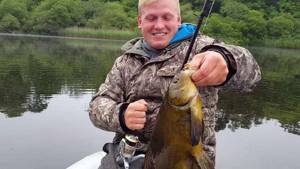
On lakes and reservoirs
On large, deep lakes and reservoirs, weather changes do not affect fish behavior as much as on shallow, small reservoirs. Last winter I often fished in reservoirs, where at high pressure (constantly over 760) large bream were caught well, even better than at normal 740. Only when the weather “jumped” constantly did the bream become capricious. But already on the second day after the jump upward in the pits at 8-9 m, the fish pecked steadily. If the pressure jumped down, it shifted to depths of 5-7 m and practically refused to bite. There were days when it hovered 2-3 m from the bottom - echo sounders clearly recorded this. All the rest of the fish bit even in the most unfavorable weather, continuing to feed for short periods, so we had to run around on the ice all day, waiting and looking for when and where these splashes and exits would occur.
It is worth highlighting the roach. Well done, it often came to the rescue both in bad weather of the first ice and during pressure drops in the middle of nowhere, indicating itself with weak bites when experimenting with baits. It happened that there was a good bite on the burdock for two days in a row, but then the weather changed, and only the dough came to the rescue. And calm, cloudy weather came, and again the roach cheerfully took whatever was given. When the weather changed, the perch was caught in unpredictable ways at times - sometimes it would break through at dawn, sometimes from 12 to 14 o'clock, there would be practically no bites all day, the fishermen would scold the weather, but whoever waited until evening would literally fill the fish tank with gorgeous “sailors” at sunset in 20 minutes. It’s the same story with pike – even with very sharp weather changes, the toothy one raised flags on the girders. But the exits were very short, there could be several of them per day and almost always at different times - morning, afternoon, evening. There were days when the toothy one was taken only with the first signs of dawn, and then nothing until the evening dawn! Accordingly, the one who exhibited at night was with the pike.
Som
When does it start to bite in the spring?
Around mid-April, when the water temperature warms up to 9-11° , catfish begin to emerge from hibernation in search of food.
He is in no hurry to get out of the pits, so you need to look for him on a boat near his wintering grounds. After the water temperature reaches 12-15°, zhor begins (beginning of May). The catfish, whose metabolism has increased, needs more and more food, so it moves throughout the reservoir in search of food. Small individuals at this time can go out into shallow water, and larger specimens are on reaches where the current is not strong, feeding on shells.
When the water heats up to 19° , the catfish goes to spawn and does not show activity until the end of May.
When catching catfish, fishermen use donks and spinning rods . As bait for donks, they use a small worm, planting several of them, a shell (without shell), and live bait (it is better to trim the fins). For spinning, silicone baits, edible rubber, and spinners are used. Fragrances are not used as they may repel catfish.
The influence of the time of year on the bite
During the winter months, fish experience oxygen starvation due to the covering of reservoirs with ice, which causes many processes in the body to slow down, including metabolism.
The time of year does not directly affect the bite. The main influence is on the water temperature, which in turn forces the fish to actively feed or hibernate.
According to the seasons, the bite can be divided into the following:
- Spring. In spring, the water temperature is constant, so fishing is possible throughout the daylight hours. Most species at this time are preparing for spawning or have finished it and need to collect the necessary reserves.
- Summer. During the summer months, especially in hot weather, good catches are possible in the early morning hours when the water temperature is not yet so high. During the day, bites will be sluggish and may often be completely absent.
- Autumn. The autumn picture completely repeats the spring one. Except that the fish are eaten off before winter.
- Winter. At this time, the fish are more willing to take bait, mainly during the day. Moreover, many people notice that fishing is more successful in winter than in summer. This is due to the small amount of feed.
Particularly active zhor begins before spawning, when it is necessary to stock up on nutrients. At this time, the fish are hungry and ready to take any bait.
Also, some time after spawning, when the water temperature is not yet high, the active period repeats. Wave 2 – in the fall. By that time, the food had already become less and she took the bait willingly.
The rest of the time the fish is in passive mode. This is especially noticeable in summer due to the abundance of food for both herbivorous species and predators. During the summer months, low activity is also affected by intense heat.
As you can see, the time of year has its influence, but only in conjunction with many other factors. These are common features that are not characteristic of all species, but they allow you to understand what is worth paying attention to if you do not want to be left without a catch.
Perch
There are only two moments in the life of a perch when catching it is problematic: two weeks of spawning and a week after the ice melts from the reservoir.
The rest of the time it feeds well and is successfully caught using various tackles. The post-spawning feast of the perch coincides with the shedding of the rosehip color and lasts about a week. After this, he goes to his summer camps, where he remains until the fall.
In early spring , young perch approach the shore in search of food (spawning fish eggs). Larger individuals reach the coastal zone two weeks later, so they are caught at long distances.
Having spawned , the perch remains near the shore for some time, chasing the fry. At this time, he is caught using a spinning rod and a float.
The best places for fishing : flooded trees, bushes, river backwaters, areas with slow currents, boulders.
When does the perch start biting on a spinning rod?
In spring, the water is still cloudy, so baits need to be selected in bright, acidic colors.
The best option for spring: wobblers, spinners, silicone baits. As soon as the haze subsides, you should switch to natural colors with a bright point of attack. Searching for perch begins with the use of spinners, which must be carried out as close to the bottom as possible. If there is no reaction to the turntable, a jig head is placed, with which the bottom topography is studied. After this, a wobbler with a depth of at least 1.5 m is used, because perch does not bite in the upper layers in the spring.
Spinning rods for catching perch should not be particularly large. Perfect for 2-2.5 m long with dough up to 15 grams and fast action. The reel should also be light, and the spool size should not exceed 2000.
The rod is equipped with fluorocarbon, monofilament or braided thread (if fishing is planned along the shore). A shock leader is used to prevent the cord from fraying.
Fishing with a float
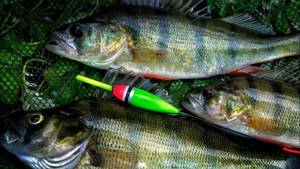
For catching perch with a telescopic fishing rod, a light rod with a length of 4 to 6 m is suitable. The reel should be equipped with a fishing line with a tensile load of 2-3 kg. There is no fundamental difference in the choice of float. Correct shipping is important.
The size of the hook must match the bait so that the perch does not escape. It is better to bait with maggots, bloodworms, worms, or a miniature silicone twister.
The main rule of perch fishing: short runs with constant play of the bait. To do this, the tackle constantly rises and falls, thereby attracting a predator.
What factors influence biting
The bite of crucian carp is influenced by many factors. Because of this, fishermen consider this fish to be finicky. In order for fishing in wild reservoirs to have results, the fisherman needs to compare all the circumstances and choose a good day for catching crucian carp.
Important! Crucian carp is adapted to both drying out of reservoirs and their freezing. It can remain without water for a long time, buried in silt, and freezes along with the reservoir, coming to life in the spring.
Season
It is worth noting that in summer the fishing is worse than in spring. Most likely, this is due to the fact that crucian carp switches to plant food, and there is enough of it in every body of water, so the crucian carp’s appetite has to be whetted with a variety of smells in the bait. The crucian carp spend hot summer days buried in the silt, and only in the evening and in the morning do they approach the thickets to feast on the succulent stems.
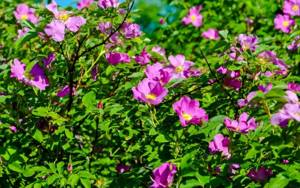
The peak of crucian carp fishing coincides with the flowering time of the rose hips. This period lasts from late May to early June.
Weather
A good bite for crucian carp before a summer thunderstorm. The rain has not yet started, but the clouds are slowly approaching, and lightning is visible on the horizon. Fish are also caught well after prolonged rains and normal weather conditions. On hot summer days without precipitation, the fish bite may stop completely.
Did you know? Crucian carp spawning repeats 3
–
4 times a year at short intervals for a month. The fish spawns in thickets of reeds or sedges, which stick to the stems.
Time of catch and place of catch
As soon as crucian carp wakes up from hibernation, it emerges from the depressions at the bottom of the reservoir and migrates throughout the pond in search of plant food. On warm spring days, crucian carp loves to bask in the sun, so you need to catch it in small shallows. In other periods, feeding tactics are important.

At the maximum concentration of natural food, the fish enter shallow water (1–1.5 m deep), so in April the fish bite is greater near the reed islands at shallow depths.
Atmosphere pressure
The pressure in the fish's air bladder is directly proportional to atmospheric pressure. With a sharp increase in air pressure, the fish is forced to lower its own pressure, rising to the surface of the water. Crucian carp, due to the peculiarities of their body structure, are most susceptible to this effect.
Find out also how crucian carp differs from carp and other fish.
At normal air pressure, fish do not feed in the upper layers of water. Low atmospheric pressure occurs during warm, cloudy weather with wind and precipitation. During this period, the fish feeds at depth. A short-term decrease in barometer readings can activate the bite. This period occurs before a thunderstorm in hot weather. After the rain the bite stops. If rainy days drag on, the bite resumes when the pressure rises and the onset of an anticyclone.
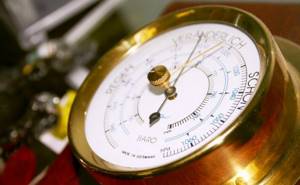
At high atmospheric pressure, which occurs in the summer with heat and drought with a cloudless sky, crucian carp can hibernate or rise to the surface of the water with a complete refusal to feed.
Important! The spawning of crucian carp depends on the warming of the water, and therefore is indefinite in time in comparison with other types of fish.
Temperature
Crucian carp is a heat-loving species. In addition to winter fishing, it should be caught at a temperature not lower than +10°C. In spring, this period occurs at different times in each reservoir: if there are many underground springs, then later, if there are few, the water warms up earlier.
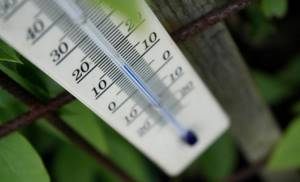
Tackle
The most popular universal tackle is a fishing rod 4–5 m long. It is equipped with a spinning reel, 0.2 mm fishing line and a light float. A landing net will help you cope with larger fish. For catching crucian carp, short hooks with a round hook No. 9–11 are used. In the spring season, when fishing at short distances from the shore, a fly rod with a blind rig is used. The simpler the tackle, the easier it is to handle.
Here you can learn how to stew crucian carp in a frying pan and in a slow cooker.
Feeder fishing is possible. This is a fishing rod with guides and a flexible sensitive tip. It is equipped with a reel and feeder. The feeder is filled with flavored bait, which lures the fish to the baited hooks. As soon as the fish begins to eat the bait, the thin removable nod on the top of the rod immediately begins to bend. This gear is used at a considerable distance from the shore on rivers with gentle currents.
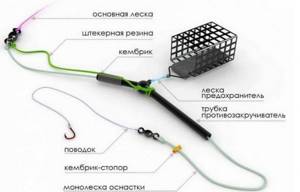
You can also use a rubber band when fishing. It consists of a sinker, a rubber part and an attached fishing line with leads. It is thrown or transported by boat to the fishing site. The advantage of this tackle is that you do not need to re-throw it every time after catching. The elastic returns the line to its original place. The hooks on the bottom are placed at different distances with different attachments.
Find out also about the necessary gear for catching crucian carp.
This has a positive effect on the fishing result. Sometimes a feeder with complementary foods is attached to the tackle. A small bell or an ordinary clothespin can signal a bite. The effectiveness of such gear with normal bite can be quite high. The difficulty of using a donkey lies in the possible tangling of leashes with hooks and in pulling it out after fishing, but despite this, the tackle is used quite often.
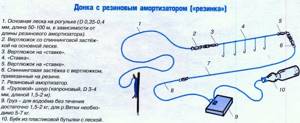
Bait
Crucian carp is very picky about bait - sometimes it likes bloodworms or maggots, sometimes it prefers dough, so every fisherman should have several types of bait. The most popular bait is dough. The basis can be various types of flour, semolina, breadcrumbs. Knead it with water or egg yolks. Honey, boiled peas or potatoes, garlic, dill, cinnamon, cloves, anise, and sunflower oil are added to the dough as flavorings.
Did you know? Female crucian carp grow faster than males, so in industrial reservoirs only females are raised with the involvement of male carp and tench for reproduction.
It is typical for each season to use certain smells in bait. In cold weather, crucian carp prefers spicy aromas, in warm weather - fruity. It should also be remembered that in winter this fish is better caught using bait of animal origin (worms, maggots). When preparing for fishing, you should have several types of bait, then fishing will be more effective.
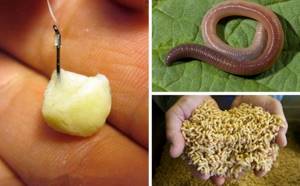
Rotan
You can find rotan in ponds and lakes. Spring rotan prefers to stay closer to the shore and often trophy specimens can be caught at a depth of up to 1 m .
Rotan is not a schooling fish, so catching more than three individuals from one place is problematic. The fish’s favorite place is coastal areas littered with branches and reeds, at a depth of up to 3 meters.
After casting the bait and there are no bites, you need to move the rod - this will attract the attention of the rotan. There is no need to hook the fish. If the float moves or sinks noticeably, it means it is on the hook, and sometimes it has to be cut off, since the rotan swallows it very deeply.
The best time for fishing in spring is early morning. Small spoons up to 3 cm and bait are used: worm, lard, fresh meat. The equipment is weighted with a sinker.
It is important to know that it is impossible to find rotan in reservoirs where there are pike and perch, since predators completely exterminate its population.
Conditions for a good bite
Any fish reacts sharply to any changes. Weather, time of day, chosen place - all this, to one degree or another, influences her behavior.
Let's look at the conditions affecting the catch in more detail:
- Times of Day. Activity has 2 long periods - morning and evening (2-4 hours each), and up to several short ones throughout the day (from 30 minutes to 1 hour). This applies to a greater extent to non-predatory species; predators hunt more readily from evening to morning, and during the day their activity drops sharply.
- State of the sky. The most favorable condition for successful fishing is high clouds without wind and with average air temperature. It has also been noticed that pike, chub, crucian carp and carp catch well during summer thunderstorms. But in low and heavy clouds the bite stops completely.
- Precipitation. Any precipitation, especially rain, provokes the saturation of water with oxygen, as a result of which the activity of many species of fish increases. In the summer months, many small predators come out to hunt small midges washed to the surface of the water, followed by large ones such as pike.
- Wind. It has a tremendous impact on the results. Thanks to it, the air temperature changes, in the process of mixing the water masses they are saturated with oxygen, it is completely capable of making it impossible to catch anything or completely stopping the bite. Here are just a few examples:
- The warm southern wind causes warming of the air and water, which worsens the bite.
- In reservoirs with low oxygen content, it has a positive effect on the bite.
- By covering the backwaters with algae, the access of oxygen is blocked, which drives the fish away.
- Near the surf shore, the wind washes away insects, as a result of which the fry go to other places, followed by predators.
- The wind, creating a surface current, greatly improves the bite in small channels between two bodies of water.
- With frequently changing wind directions, the bite worsens or stops completely.
- Pressure. When it increases, the fish rises closer to the surface and falls when it decreases. During these movements, the bite worsens. Stable pressure around the norm - 760 mm Hg - is the best for fishing.
- Moon phases. The influence of the Moon certainly has some influence on the bite, but it is hardly noticeable against the background of other factors. Because of this, it is difficult to draw up general rules of conduct.
- Air temperature. By influencing water temperature, air temperature creates various conditions that affect feeding.
- Fishing place. Choosing a place is perhaps the most important rule. And everyone should be able to determine what is most successful based on external signs. Here are a few signs:
- The depth of the concave banks of small winding rivers is always greater than in straight sections. Such banks have a steep steep slope.
- Slow-moving water at a narrow point in a river is usually slightly deeper than at a wide point. A fast current indicates shallow depth.
- The depth in clear water can be determined by its color - a dark, thick color indicates a fairly large depth.
- Below the riffles there are usually whirlpools - deep holes with slowly flowing water.
- Plants can also tell you about the approximate depth of a reservoir. Sedge or cattail grow in water with a depth of up to 1 meter, reeds or reeds - from 2 to 3 meters, water lilies - up to 4 meters, and various algae - over 4 meters.
- By the water “lamps” it is easy to identify trees, large stumps, snags and large stones under water - favorite places of many predators.
- Water transparency. Transparent, clean water, as a rule, is better enriched with oxygen and does not contain the products of rotting algae. The cleaner it is, the more actively the fish feeds, therefore, the better it takes the offered bait.
- Water level. Fish are sensitive to the water level in the reservoir and try to move upstream. There is a short period of crazy biting - when the water begins to rise, but it quickly passes. The main thing is that during the spill there is no significant turbidity of the water.
- Flow. The current as such has no effect, it all depends on the specific type of fish and the method of catching them. It can affect the distribution of the smell of bait, the turbidity of the water and some other factors.
Carp
In Russia, carp begin to bite in late May - early June, depending on the luck of the year and specific regions.
Fishing in Astrakhan
In the spring in Astrakhan you need to go fishing for carp from mid-April.
At this time, the fish comes out of the holes and rushes to shallow water in search of food. The largest individuals (up to 30 kg in weight and up to 1 m in length) are caught in the dark, both from the shore and from a boat. Carp loves places with slow flows, edges, snags, steep banks, river bays, and the edges of river thickets. Also, one of the conditions is the nature of the bottom: it must be muddy.
When fishing for carp, the rod should be replaced with hooks, elastic bands, and a feeder. Edible and artificial bait, as well as boilies, are used as bait. The catch of carp will increase significantly if you feed it during the fishing process (corn, beans, soybeans, potatoes, boiled and mixed with the soil of the reservoir).
If a fisherman chooses a fishing rod, then its test weight should not be less than 90 g, and the length of the line on the reel should be up to 150 m - this will allow you to make long casts.
The secret to successful carp fishing is the use of pheromone baits, which stimulate hunger, attracting whole schools of fish to one place.
Folk signs of pike biting
You can catch the moment of a pike's zhor by focusing on folk signs. The fact that the water in the river has risen and warmed up is recognized by the flowering of bird cherry and rose hips. Dandelions appeared in the meadows, the oak tree was covered with its first leaves, and quails began to sing. The post-spawning period of pike biting coincides with high water. Where the pike has spawned, it will feed.
The richest catch can be obtained in autumn and spring after spawning. Morning and evening are the best times to hunt pike during the day. But experienced and skillful fishermen do not deny themselves the pleasure of fighting with river predators at any time of the year and successfully catch large specimens regardless of the season.
Views: 922
Similar articles:
- What time of day to catch pike in the summer Pike can be caught at almost any time of the day and...
- In what weather is it better to catch pike: atmospheric pressure, wind strength and direction, biting in the rain. Under what weather conditions does pike biting increase, what causes it...
- Pike spawning. When, where and under what conditions does pike spawn? Pike spawning is an amazing phenomenon in which these fish...
- Pike fishing in March: where to look and what to catch March fishing, depending on the vagaries of nature, may fall on…
Silver carp fish
In early spring, silver carp are inactive , feed near the bottom of the reservoir and do not come to the surface.
The fishermen's task becomes easier in April, when the water warms up enough and the fish come out to bask. You can often see splashes - this is a heat-loving silver carp jumping out. The fish come closer to the shore in windy weather , when food is blown off the land. So, in places with fallen vegetation you can catch a trophy specimen. The spring feeding of silver carp lasts until the end of May - beginning of June, when its spawning begins. In the post-spawning period, zhor resumes. The fish actively go for natural baits: insects, vegetation, fruits, grains.
Fishing in spring on ponds
To successfully fish for silver carp on ponds, select the appropriate gear:
- bottom;
- float;
- for technoplankton.
During cloudy weather, silver carp sink to the bottom in drifts and snags, so fishing with a bottom will be relevant. Float tackle will help you catch fish in clear weather in shallows no more than 3 m deep.
A trick for a fisherman: if you can’t visually determine the location of the fish, just hit the water with an oar: the frightened fish will give itself away.
